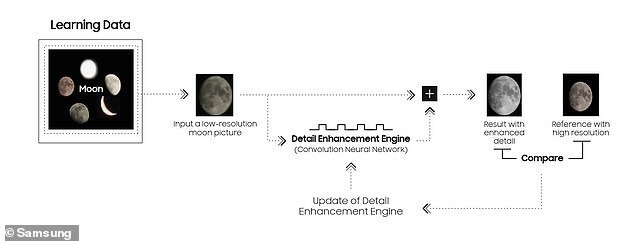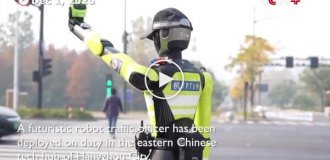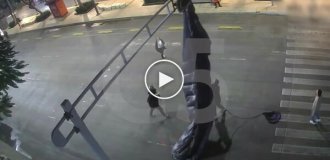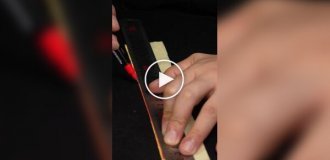Samsung engineers faked moon photos: users are furious (5 photos + 1 video)
Photographs of the moon released to the public by Samsung turned out to be fake. After irrefutable arguments, technological the giant admitted that he used artificial intelligence to improve pictures taken with the Space Zoom tool. Users are not appreciated the confessions and accuse the company of shameless lies.

Netizens are outraged after discovered that the Space Zoom camera tool in their Samsung smartphones uses artificial intelligence to improve photos. One of of users called the tech giant a "scammer", proving the fact fraud in practice. To do this, he deliberately blurred the photo. The moon, and then photographed it with their smartphone Galaxy S23 Ultra. The resulting image was much more detailed, featuring craters and surface textures are visible that were not visible in original. According to the user, this picture proves that Samsung AI 'does most of the work' since "optics is not capable of displaying practically absent details". The company responded by admitting that it uses artificial intelligence to recognize when the moon is in the frame, but never managed to refute the Internet detective.
“Since the Moon is connected to the Earth, it is very easy to train your model on other images of the moon and simply overlay its texture on photo when something similar to the moon is discovered, ”wrote user. He also found that if the "Optimize Pictures" on the camera is disabled, it creates a blurry photo of the moon. A if the original image shows two blurry moons, the technology will generate and apply a realistic moon texture to only one of the them.
The user called the photos of the natural satellite of the Earth, taken with the Space Zoom lens are "fake" because they "adding details where there are none."
"Although some people think that such photos demonstrate the wide possibilities of your camera, in fact In fact, this is not the case,” the investigator wrote. - It's not sharpening, this is not adding details from multiple frames, because in this In the experiment, all frames contain the same amount of detail. Neither on one of the frames does not have craters and other details, because they are intentionally are blurry, but the camera somehow miraculously knows they are there.”
The author of the investigation accuses Samsung of “fraudulent” marketing, as the company claims that the new lens "may focus on objects or people that are farther away than you can reach capabilities of previous models. Pictures of the Moon - a distant object at low light - are a good test of power and capabilities cameras, so they are often used as an example in advertising campaigns.
After the investigation went viral, Samsung responded by acknowledging that the optimization feature "uses advanced AI to object recognition” and “detail enhancement”. "Introduced in the series Galaxy S21, the image optimization engine was able to recognize the moon as specific object at the time of taking a photo and applied a mechanism to its picture detail improvements,” the post reads. “When you take a photo moon, your Galaxy device's camera system will use this artificial intelligence technology based on deep learning, and also multi-frame processing to further improve details"
The company claims that the AI algorithm has been trained to recognize pictures of the moon so he can tell when it is showing camera lens. It then automatically adjusts the focus and brightness images to make it as clear as possible before rendering a few pictures. Finally, the AI detail enhancement mechanism “removes the remaining noise and further improve the details of the image. However the company does not disclose details, which means, according to the blogger, perhaps the camera is simply using the available data to create realistic texture of the lunar surface, which is not in the original.
“There is a difference between additional processing a la super-resolution when multiple frames are combined to restore details that would otherwise be lost, and the situation when a particular AI model trained on a set of images of the moon, recognizes the moon in order to overlay the texture of the moon on it - despite the fact that on there is no detail at all in the picture that could be restored, as in this experiment,” writes an investigative blogger.
Other users were extremely unhappy with the revealed facts. One of them noted that he was "very disappointed" after how he was initially impressed with the Samsung camera. Another said that they "was would agree with the company if they were more transparent” and unequivocally proved that the optimization mechanism adds details that theoretically should appear in the photograph, and does not create false ones.
But other users disagree with this, arguing that any such optimization "makes senseless all attempts photograph the moon. "There are thousands of images that you can download from internet in much higher resolution for any phase Moon,” wrote one Reddit user.
A Samsung spokesperson, in turn, responded to the accusations as follows:
“Samsung is committed to providing best-in-class photography opportunities in all conditions. When the user photographs the moon, AI-based optimization technology recognizes the moon as the main subject and takes multiple shots for a multi-frame composition, after which AI improves image quality detail and colors. It does not apply an image overlay to a photo. Users can deactivate the AI scene optimizer, this will disable automatically enhance the detail of any photographs taken.
The debate about whether artificially enhanced images can intelligence or fully generated, be attributed to the same class, like photography, have been going on for a long time. Last month a photographer who has amassed thousands of followers thanks to his photorealistic portraits, admitted that he created them using software based on trained artificial intelligence. In response, he received backlash from his followers who thought he "deliberately misleads people" into thinking that it is photographs taken by the camera.
“The creative process is still in the hands of the artist or a photographer, not a computer,” says artist Jos Avery, working with AI programs. He added that although people think "correct" to disclose the information that the image was created artificial intelligence, in the past the photo industry is also not always openly reported elements of deception.
Do women reveal that putting on make-up for a photo? What about cosmetic surgery? Each commercial fashion photography contains a large dose of photoshop, including replacing celebrity bodies on magazine covers,” says Avery.





















